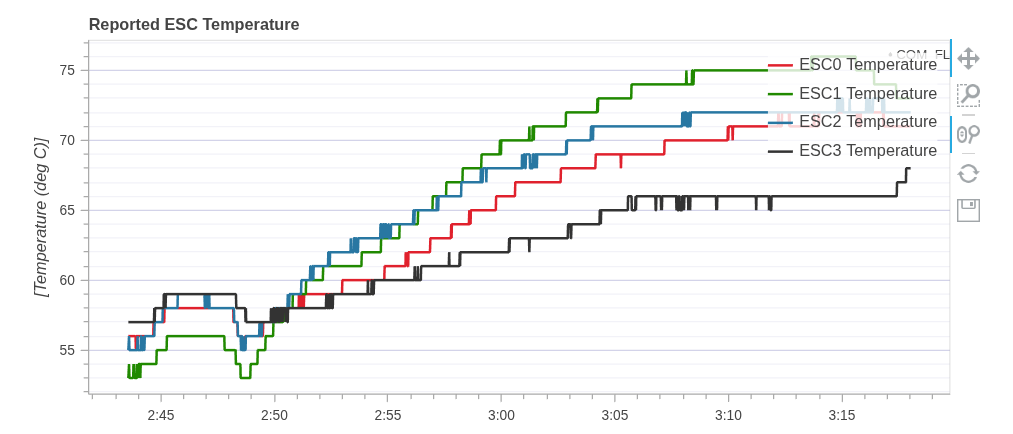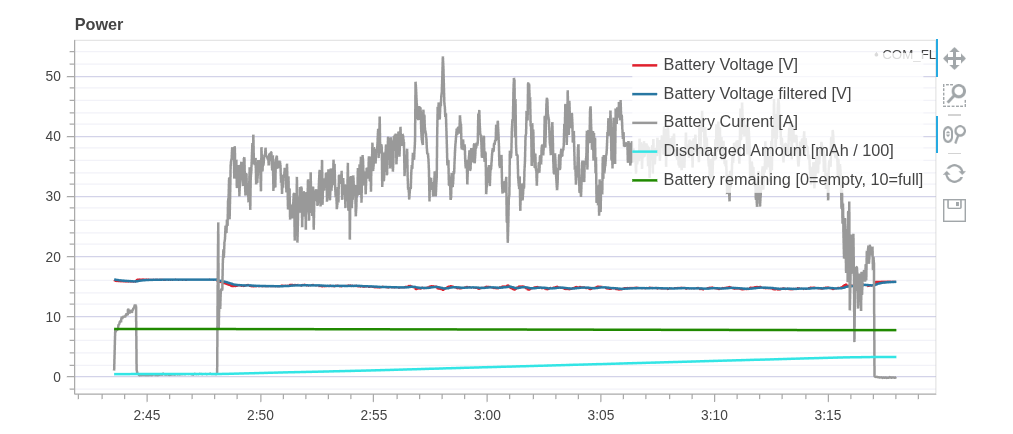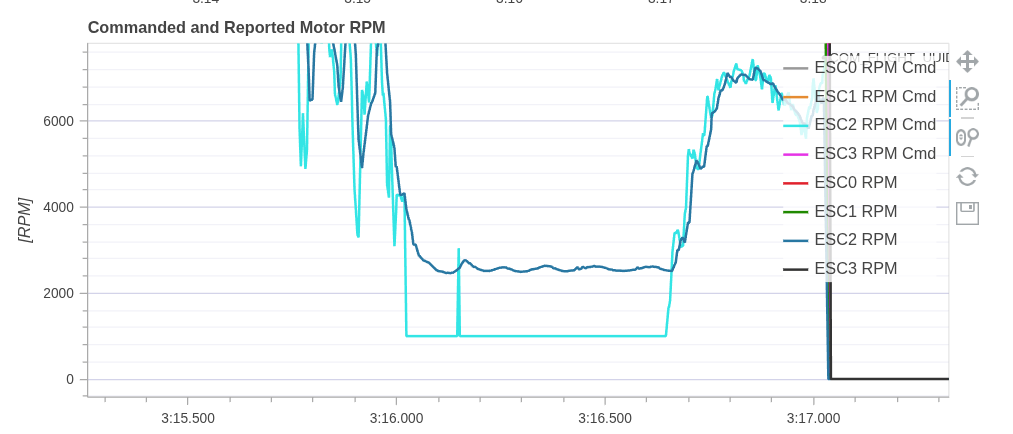Hello, @HsinSWT ,
I am assuming your are using a 12V AC/DC adapter, which is higher voltage than the 2S battery used with Starling 2. Using 12V bench testing is OK, so that should not be an issue.
The ESC should already have the correct parameters loaded for the Starling 2 Motors and the correct battery voltage (2S). Inability to start at the nominal voltage, but success when using 12V is likely a symptom of a motor damage. Even though the ESC does have voltage compensation, it is limited (on purpose, for safety) and if you apply higher voltage, like 12V instead of 7-8V, the ESC will actually output higher power during the spin-up phase.
Also please make sure you are using the latest ESC firmware, there are a lot of tips here : https://docs.modalai.com/voxl-escs/faq/
Once you start using voxl-esc tools, you can also spin one motor at a time (or all 4 at a time) and get real-time RPM feedback. You could use your 12V supply and spin the motors at 10% power and see what RPMs they actually spin at. A faulty motor would spin slower. Please be careful while testing, since the drone could fly up if you send a wrong command, you could also test without propellers, the motor issue should be observable in unloaded motor RPMs as well.
Another typical issue with motors not spinning up is damage of motor windings due to mounting screws going into the windings (which could happen if the landing gear is removed, but the same screws are used to attach the motors). I am not saying this is the case here, but worth inspecting the motor windings on the under side, right where the motor mounting screws could make contact with the windings if the screws were too long.
If you do have a milli-ohm meter accessible to you, you could actually measure the motor winding resistance (while the drone is powered off, but motors can remain soldered to the ESC). You can compare the milli-ohm readings from working motors vs non-working (check all phases pair-wise).
The rust on the inductor is only cosmetic. We are aware of this "issue", but it's really not an issue (rust on a iron case of an inductor - the case does not really affect the inductor itself).
Hopefully this helps!
Alex





